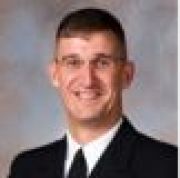Medical students are constantly molding and reshaping their sense of identity in response to multiple internal and external forces coupled with their evolving understanding of what it means to be a physician. It is normal for students to struggle with their professional identity at any given point in time during their educational journey. Much of the identity work that takes place during medical school takes occurs through the informal processes embedded within the hidden curriculum. In this setting, students are told one thing in the formal learning setting while observing something completely different in the clinical environment. This juxtaposition contributes to identity conflict, particularly if a student is trying to be accountable to multiple influences that don’t align.
With this in mind, helping medical learners explore their professional identity formation (PIF) is a central responsibility in medical education. To facilitate this, we have adapted the use of mask making in the specific context of examining PIF in medical education. Human beings are biologically conditioned to respond to faces. Masks, therefore, evolve from a longstanding and fundamental human need to explore meaning and belonging, navigate transitions and ensure survival. As such, the act of mask making represents both process (constructing the mask) and product (the mask itself). Mask-making, therefore, is a unique modality to foster reflective expression and professional growth.
A medical trainee’s professional identity represents the extent to which they feel like a true member of their profession and the community of practice they have chosen to enter. Identity formation is a complex, multifaceted process whereby an individual forms an enduring sense of self that serves to distinguish himself/herself from others. Dynamic and comprised of multiple primary (e.g. race, gender) and secondary (e.g. medical student, spouse) components, an individual’s identity is in a constant state of flux across time and contexts. As individuals progress from infancy through adulthood, identity formation is an ongoing process that organizes experiences and relationships into a meaningful whole incorporating elements of personal, private, public and professional life, providing an overall sense of self. Identity is continuously created (and re-created) through professional discourse and interactions with others. In the context of medical education, it has been suggested that professional identity formation is developmental process that takes place both at the individual level and the collective (community) level.
Mask-making and Identity in Times of Transition
Masks are an ancient means to alter identity or to take on a new persona. The word mask comes from the Arabic maskhara, meaning to ‘falsify’ or ‘transform’. Masks and the art of mask-making have historically occupied central roles in ritual, ceremony, celebration and creative expression. Masks facilitate a transcendent desire to make the mysterious concrete and to provide order in the midst of chaos or uncertainty.
As transitions occur, predictable identity adaptations follow. Medical students go through dynamic changes in identity as they assume roles associated with health care professionals. This transformation can lead to identity dissonance for medical students who must deconstruct portions of their old identity while simultaneously constructing a new ‘medical identity.’ Individuals entering periods of transition (e.g., entry to medical school, beginning residency, entering independent practice) do so with previously established personal identities. Students enter medical school with multiple and complex sub-identities while trying to adapt to preconceived expectations of what it means to be a medical student. Transitions in roles naturally lead to changes in identity.
Mask-making addresses ambiguities and highlight potential paradoxes in times of transition. The experience allows the maker to explore boundaries and investigate the experience of change. Mask making facilitates the transformation of problematic or uncertain elements of personal identity into newer, safer ones. Mask-making is a complex process that combines form and content to evoke both visual and emotional reactions. Masks are wonderful vessels for communication that may mean one thing to the viewer and something completely different to the artist/creator. As such, masks are delightful ‘third objects’ to promote constructive dialogue.
The process of mask-making also explicitly allows the mask-maker to externalize feelings of internal conflict by projecting them onto the mask itself. The creative process and resulting artwork can be used to resolve inner struggle and promote holistic identity formation. The mask-making process facilitates exploration of feelings, decreases shame and/or fear of exposure and breaks through layers of psychological confinement or internalization of emotions.
Mask-making is a unique modality to explore PIF in medical education. Mask-making potentially provides students with unique pedagogical space to examine and synergize their developing identities. Mask-making is a tool that can help break through communication barriers when words alone are insufficient for expressing progress and/or struggles in the iterative process of learning to think, act and feel like a healthcare professionals.
Have you used mask-making in your educational practice? Comment below to join the conversation!
Mark B Stephens

Mark B. Stephens, MD MS FAAFP (Educators ’17; Museum ’19; Virtual ’21) is a Professor of Professor of Family and Community Medicine and Humanities, and a Master Educator at the Penn State College of Medicine. Mark’s areas of professional interest include physician wellness and the integration arts and humanities in medical education. Mark can be followed on Twitter or LinkedIn or contacted via email.

